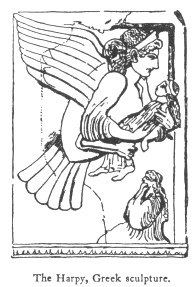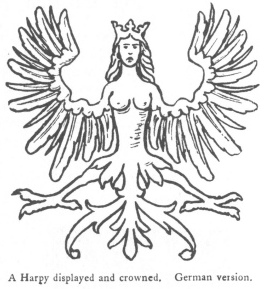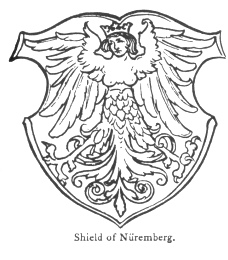
Sacred Texts Legendary Creatures Symbolism Index Previous Next
Buy this Book at Amazon.com


Fictitious and Symbolic Creatures in Art, by John Vinycomb, [1909], at sacred-texts.com
"Thou art like the harpy,
Which to betray, doth wear an angel's face,
Seize with an eagle's talons."
"Pericles Prince of Tyre," Act iv. sc. 4.
A poetical monstrosity of classical origin, described as "winged creatures having the head and breasts of a woman, and the body and limbs of a vulture; very fierce and loathsome, living in an atmosphere of filth and stench, and contaminating anything which they
come near. Pale and emaciated, they were continually tormented with insatiable hunger." They are
 |
In Miss Millington's admirable book, "Heraldry in History, Poetry and Romance," it is stated that unlike the generality of such mythical beings, the harpies appear originally, as in Homer's "Odyssey," as persons instead of personations; while later authors for the most part reduced them to whirlwinds and whirlpools. Homer mentions but one harpy. Hesiod gives two, later writers three. The names indicate that these monsters were impersonations of whirlwinds and storms. The names were: Ocypeta (rapid), Celeno (blackness), Aello (storm).
 |
The arms of the City of Nuremberg are: azure, a harpy displayed armed, crined and crowned, or. It occurs as the city device as early as 1243. In German heraldry it is termed jungfraundler.
 |